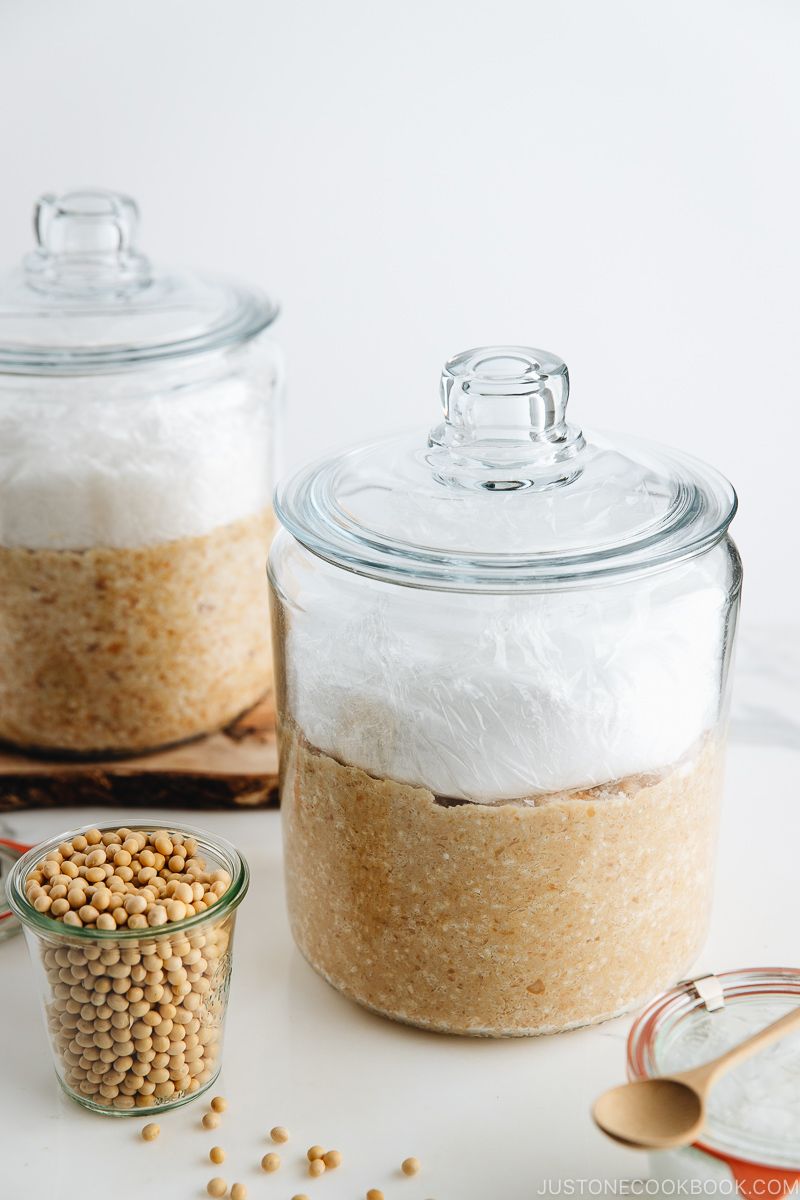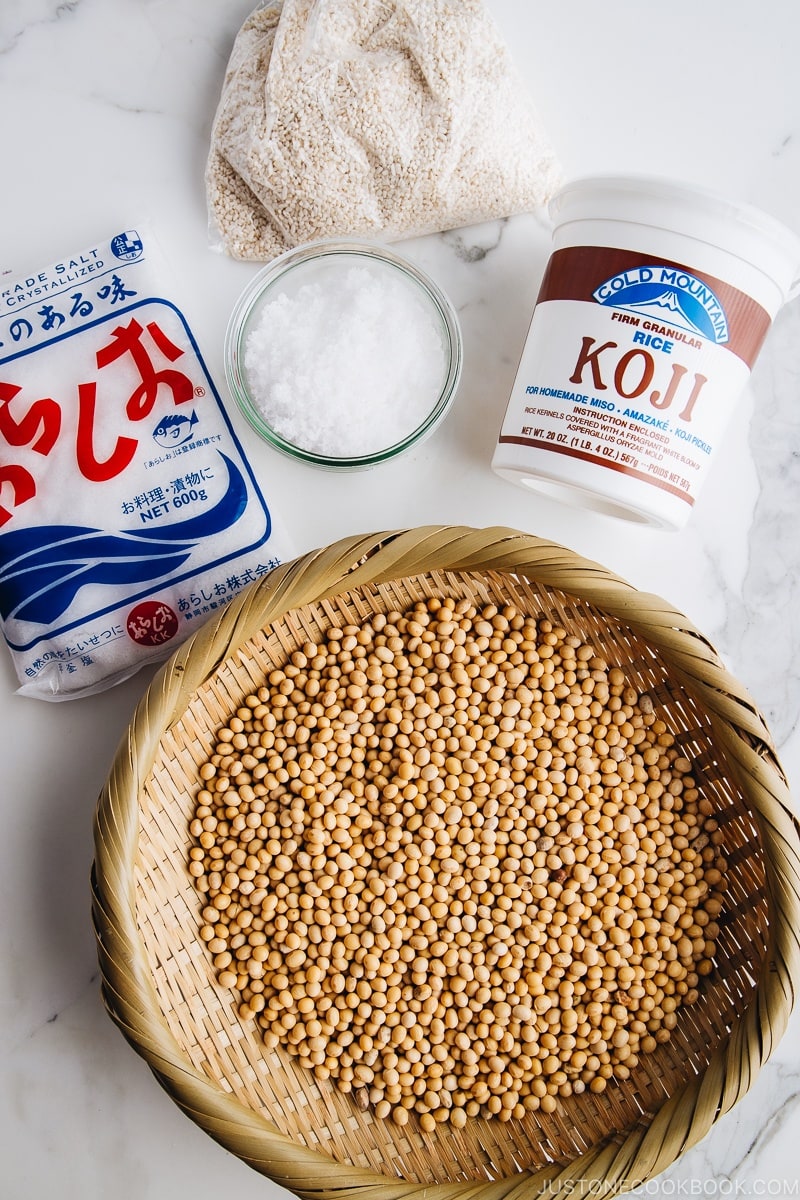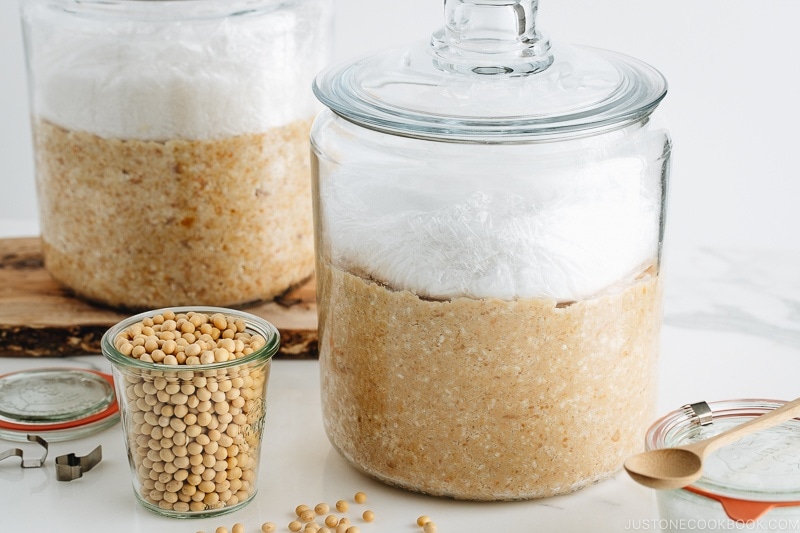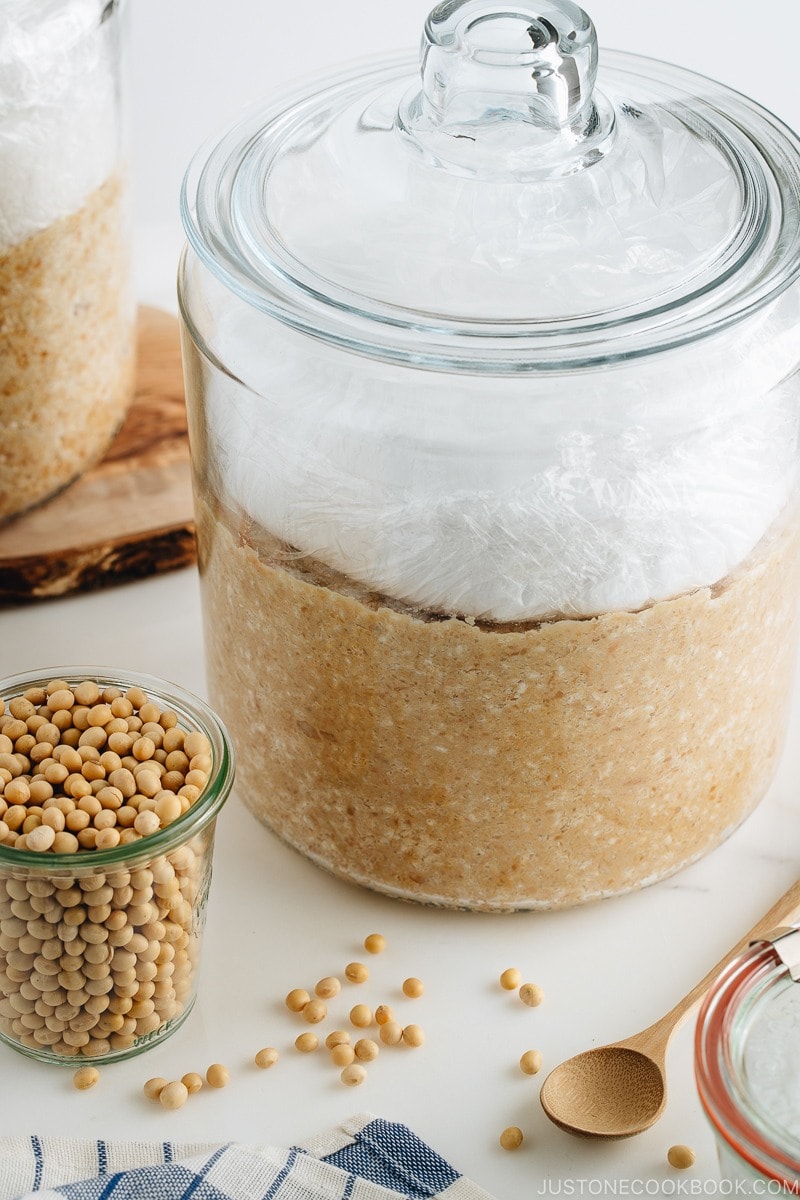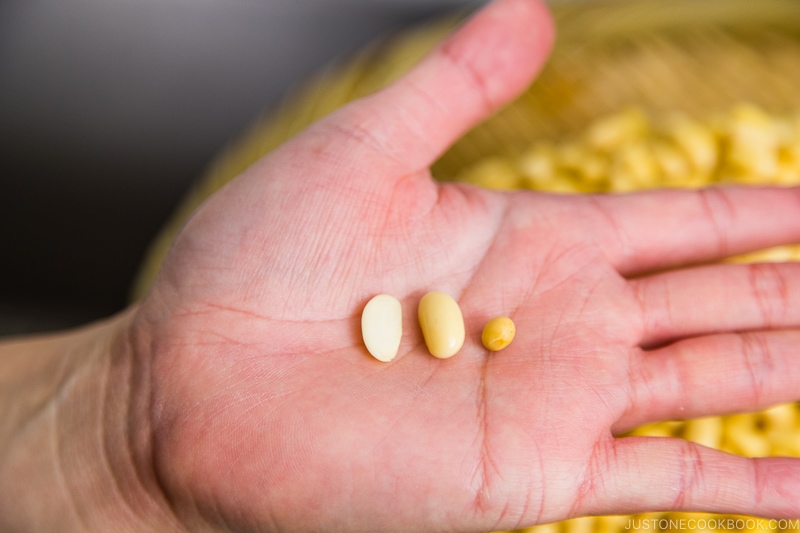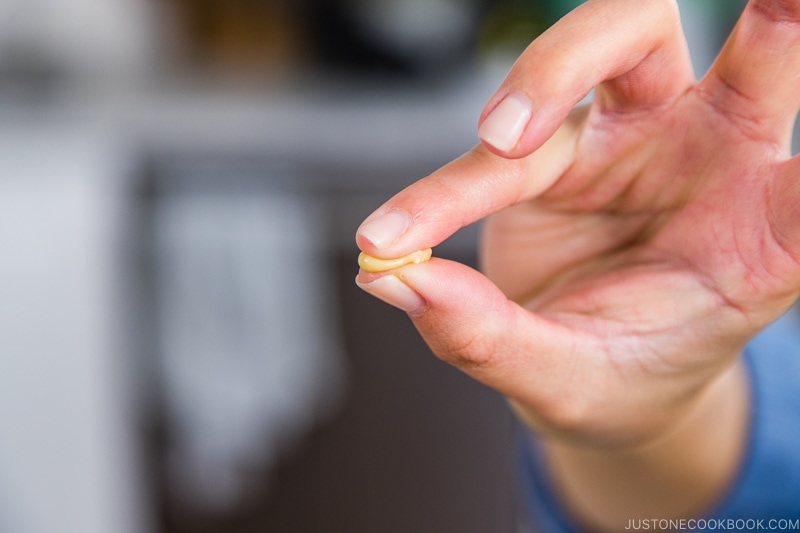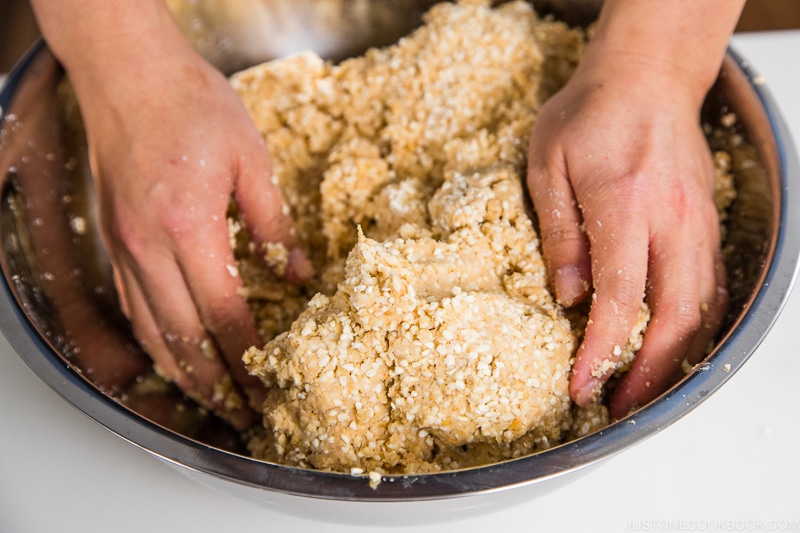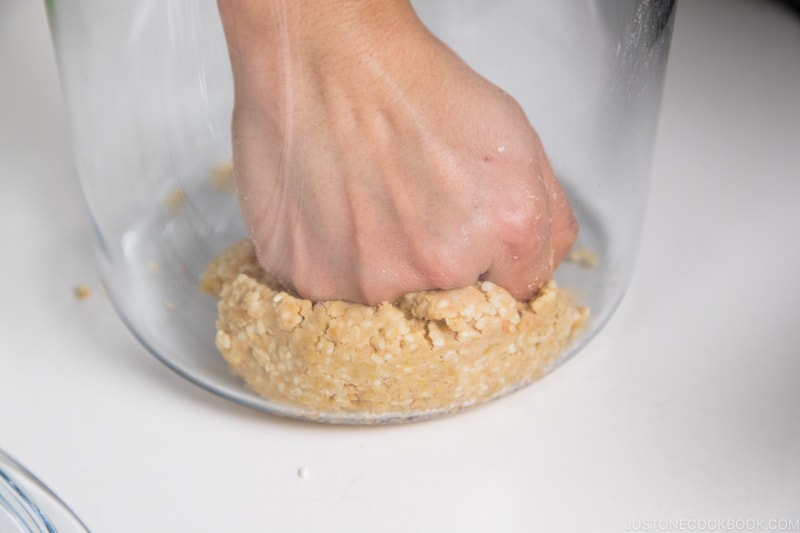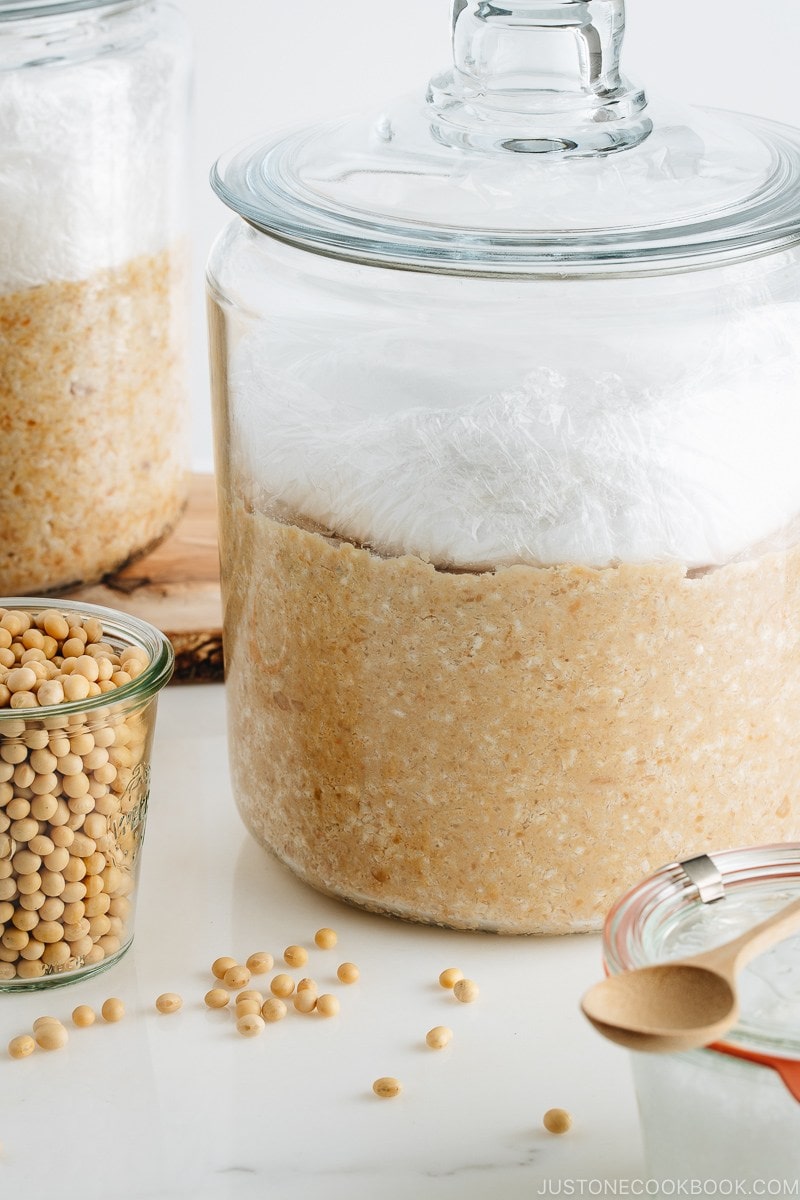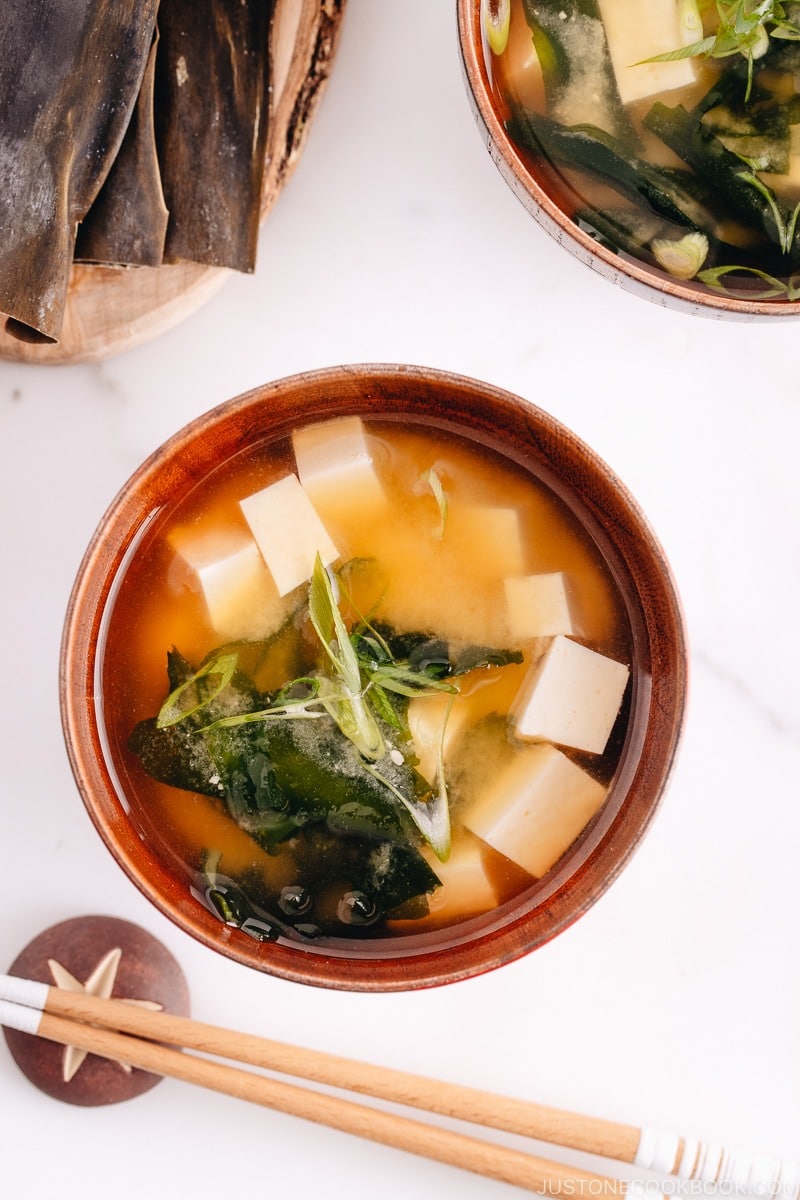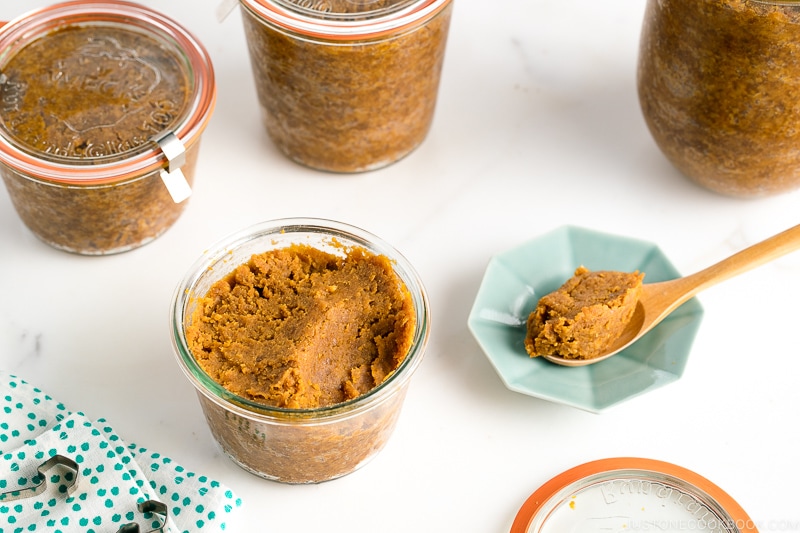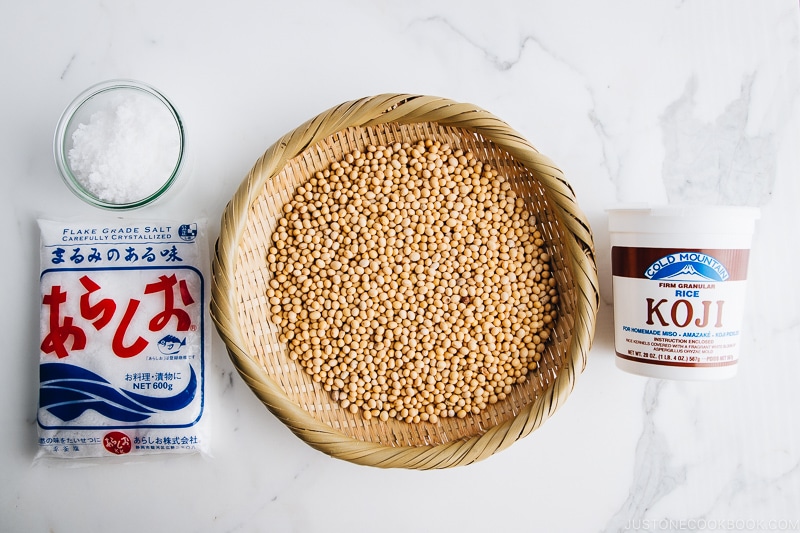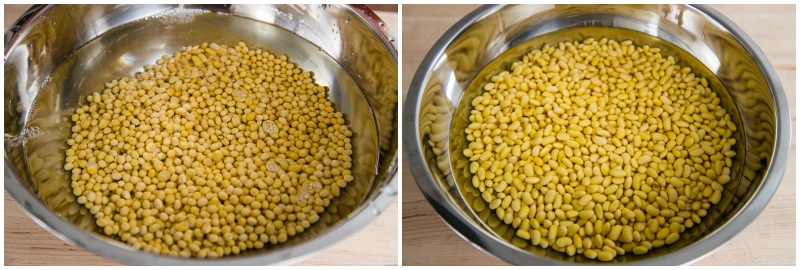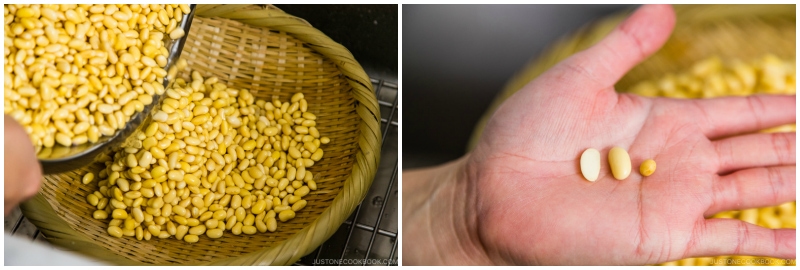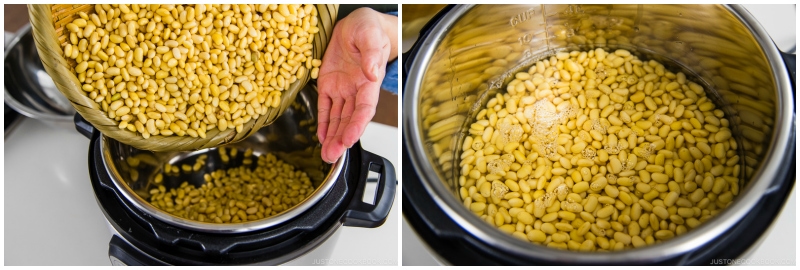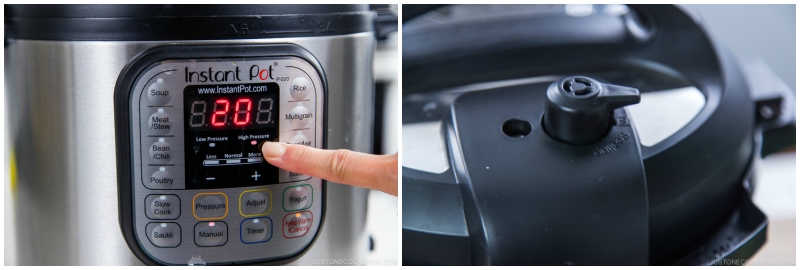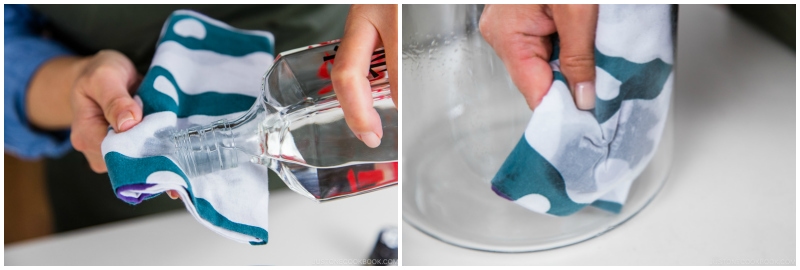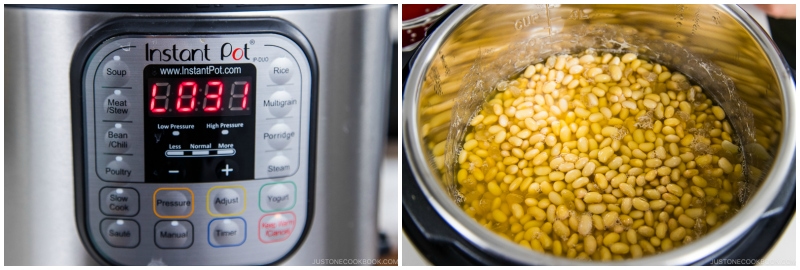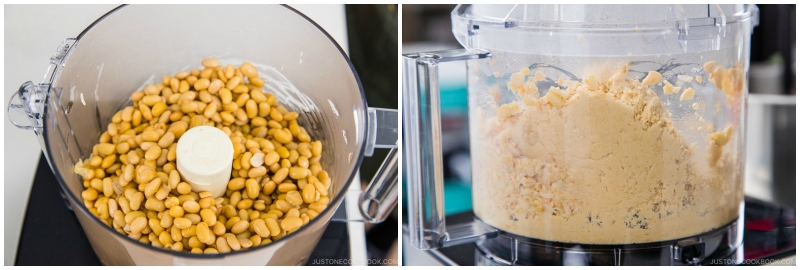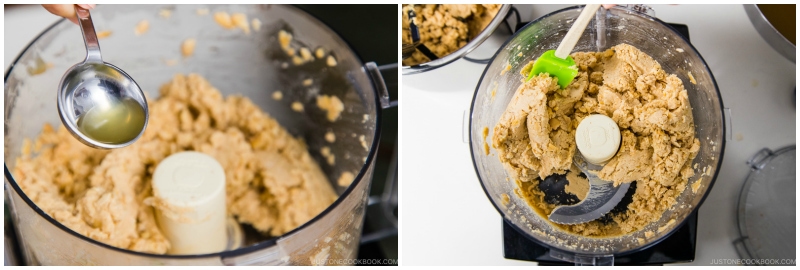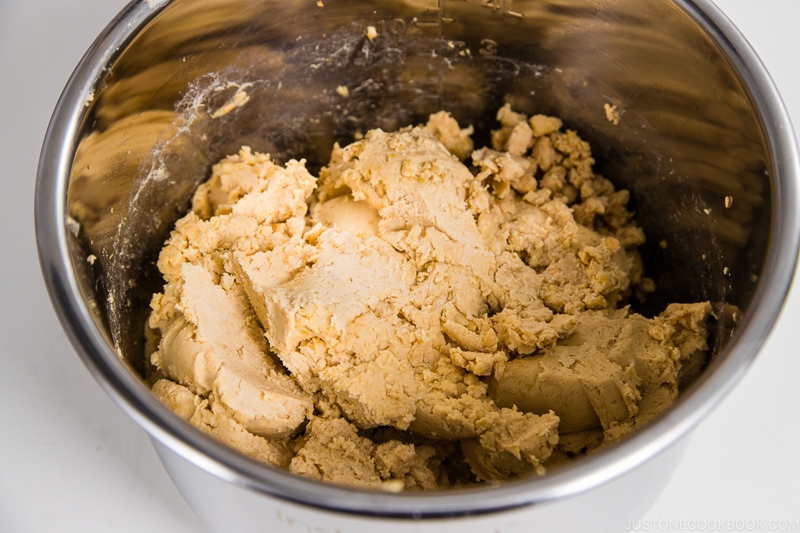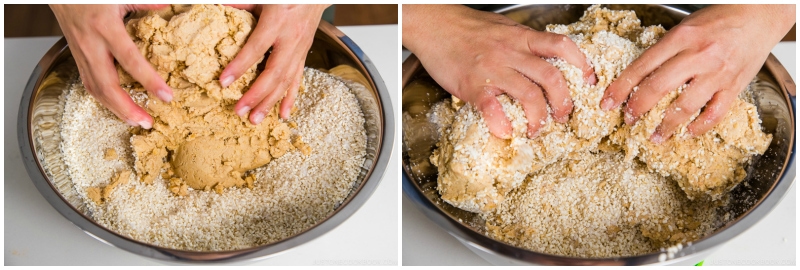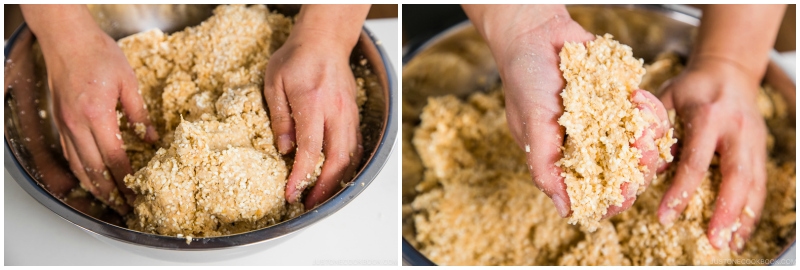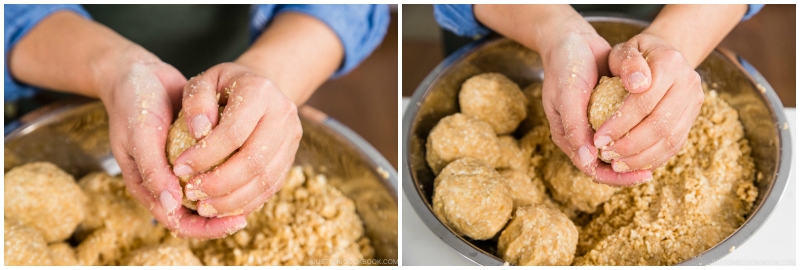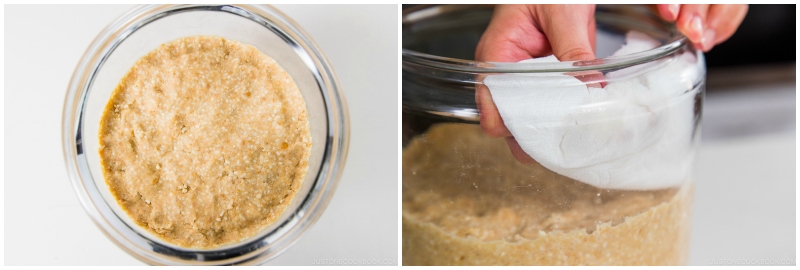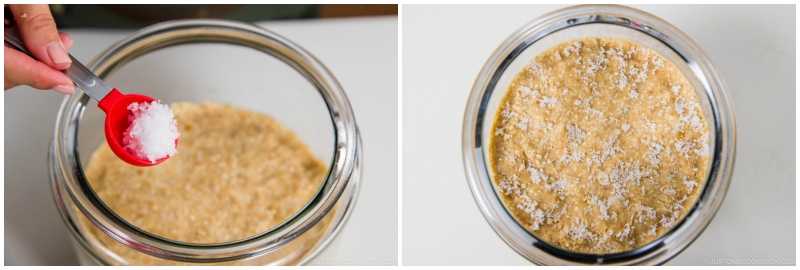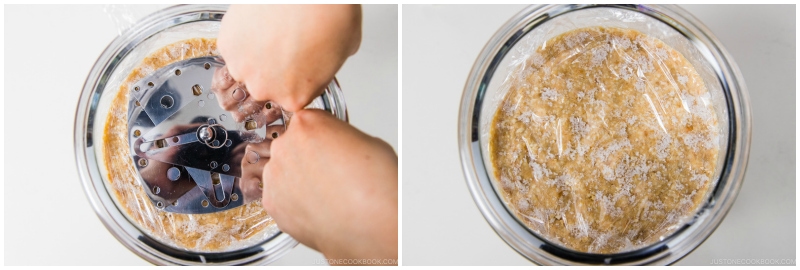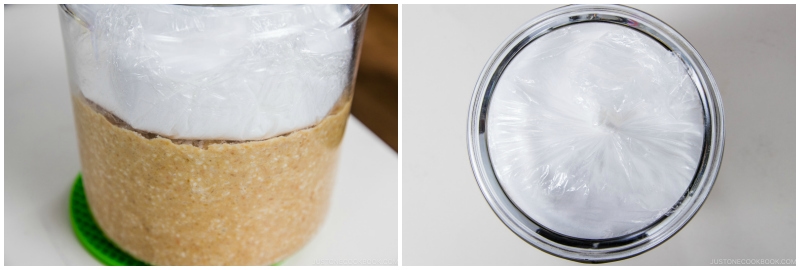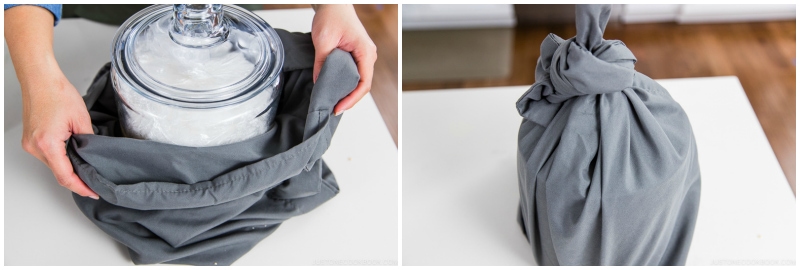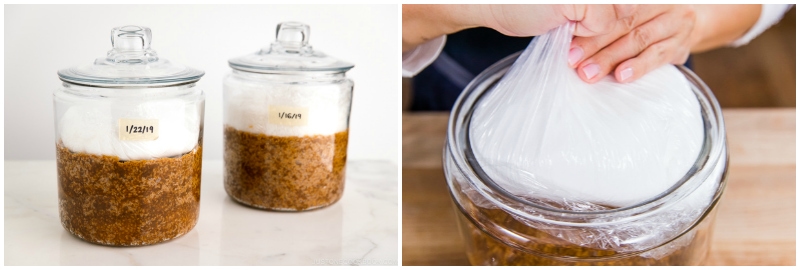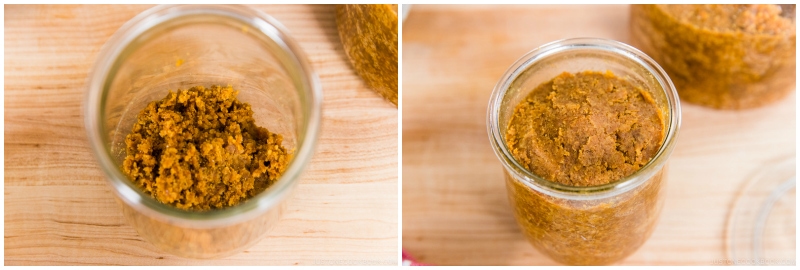As a home cook and Japanese cuisine advocate, I want to share not just the recipes but the tradition of making food from scratch. I believe there is a beauty in preserving the heritage integral to our food culture. Do you agree? This year, I’ve taken up a few new cooking projects, and making miso paste from scratch is one of them. This is my first time making miso, and I couldn’t be more excited to share the experience with you! Before we start, I wanted to reassure you that making your homemade miso is easier than you think. You will only need a few simple ingredients and a little patience.
What is Miso?
Miso (味噌) is a Japanese seasoning produced by fermenting soybeans with salt and koji. It has been used in Japanese cuisine since 1200 AD (a precursor of miso arrived in Japan from China around 600 AD). As one of Japan’s superfoods, miso is well recognized for its many great health benefits. It is rich in essential minerals and a good source of various B vitamins, vitamins E, K, and folic acid. As a fermented food, miso is full of probiotic that provides the gut with beneficial bacteria that help us to stay healthy. You might have seen various types of miso available at the grocery stores, but in general, miso can be categorized by 3 factors: ingredients, color, and taste. In Japan, miso can also be categorized by regions.
- To learn more about miso and its different types, please read my detailed miso post on my blog.
My Miso-Making Journey
When I get home from a long trip, I often crave simple homemade miso soup and onigiri. Even though miso is indispensable in my diet and cooking, I realized that I had never made it from scratch before. Like making your own mochi or plum wine, it struck me that there was something special about making your own miso, and I really wanted to do just that! So if you’re like me, wishing to make this Japanese condiment from scratch, try making your own miso! My miso recipe is based on a Japanese miso company’s tutorial that I found upon my research. I will try different recipes in the future and update/modify my recipe based on my own experimentation.
The Best Time of Year To Make Miso
While you can make miso year round, I recommend that you start your miso in late fall to winter for the best results. Here’s why:
Miso fermentation works best starting from a cold winter into a cool spring and ending in a hot summer. It’s less prone to contamination because the drier air in the colder months is less humid. Miso develops a deeper flavor in lower temperatures because it’s fermenting more slowly. You can use freshly harvested ingredients to make your miso since rice and soybeans are harvested in late fall.
4 Simple Ingredients To Make Miso
Tools For Making Miso
How To Make Miso
Making miso takes 2 days of active time and 6 months of inactive fermentation time, so you have to wait half a year before you use your batch. Umm… are you still here? It may sound daunting, but the method is actually simple and the result is totally worth the effort! In my recipe below, I included both Instant Pot and stovetop options for cooking the soybeans.
Day 1
Day 2
Then, wait patiently for 6 months…
Check the Progress of Your Miso
The timing and season matters for the speed of fermentation and maturation. For example, miso prepared in summer will be ready in 3–4 months. On the other hand, if it’s prepared in winter, it takes more time to ferment and mature, roughly 6 months. Keep checking the progress of the fermentation. Taste your miso, and if it reaches the flavor profile you like, move it to the refrigerator. This slows down the maturation, discoloration, and flavor changes.
5 Important Cooking Tips
1. Soak the soybeans for 18 hours
Dried soybeans take time to absorb moisture (See above photo: 18-hour soaked bean on left vs dried bean on right). To make sure the soybeans are cooked through to the core, you need to soak the soybeans for 18 hours. If you want to start cooking (pressure cook/simmer) soybeans from 10 am, you need to start soaking the soybeans at 4 pm on the previous day.
2. Check for doneness by crushing a soybean
Pressure cook or simmer the soybeans until they are soft enough to easily crush between your thumb and pinky.
3. Mash the soybeans well
Mash the hot soybeans, a small amount at a time, to an even consistency. It’s okay to have small bits of chunky soybeans here and there, but try your best to mash most of them well. Alternatively, you can use your food processor if you have one, which will definitely speed up the process.
4. Knead the mixture well
Make sure the mashed soybeans are warm or at room temperature when you combine with the koji and salt mixture. Knead well to distribute the koji to facilitate good fermentation throughout.
5. Remove the air pockets completely
Form balls of the soybean mixture and pack them tightly in a jar. Press down each ball of the mixture as firmly as possible to remove any air pockets. This will prevent unwanted mold growth.
1. Can I halve the recipe?
Yes, you can.
2. What type of miso are we making here?
Since we’re using rice koji, the type of miso in this recipe is considered kome miso (米味噌). However, the process and length of fermentation will determine the final color and taste of the miso. White miso requires a shorter fermentation time (6 months) and you’ll get a sweeter flavor and smoother texture. To make saltier miso, you can leave the miso to ferment for up to 1–1.5 years as the color darkens and the flavor develops stronger. Having said that, there is a lot more to it than simply categorizing them by type. The method of preparing the soybeans and the ratio of ingredients also play a part in the end product. That is why there are SO MANY types of miso in Japan.
3. Where can I buy rice koji?
In the US, you can find Cold Mountain brand of rice koji for sale. If you live outside of the US, you can buy rice koji from Anything from Japan which ships internationally. If you live in Oakland, a reader shared that you can buy fresh koji from this shop called Preserved Goods.
4. Can I use a mix of soybeans with other beans like garbanzos (chickpeas)?
Yes! If you’re willing to experiment, feel free to mix the soybeans with other types of beans or grains. We have readers who have tried it with garbanzo and northern beans with success. However, the soaking time for garbanzo should take just about 10–12 hours.
5, What should I do if I spot some mold growth during the fermentation?
Mold can be quite normal, especially if you live in a humid climate. Gently scrape them off and transfer the miso into a different container. Make sure to keep an eye on them.
How To Enjoy Homemade Miso
The first thing you should make with your homemade miso is of course some delicious homemade miso soup. But miso has so many more uses you can think of! It’s essentially the most versatile seasoning you can have in your pantry. Think marinades, sauces, glaze, compound butter to baked goods! Here are just some of my popular miso recipes you can dream of using when you have the jar of miso ready to be enjoyed:
15 Delicious Miso Recipes Homemade Miso Soup Miso Cod Miso Ginger Pork Miso Chicken Miso Salmon All-Purpose Miso Sauce Miso Ramen Miso Butter Cookies
Share Your Miso-Making Journey With Us
I wish you plenty of success in making your own miso! If you have gone ahead and tried my recipe below, please share your experience with us in the comment below. How long did you leave it for? Did you make any adjustments to the ratio? I’d love to hear from you. Wish to learn more about Japanese cooking? Sign up for our free newsletter to receive cooking tips & recipe updates! And stay in touch with me on Facebook, Pinterest, YouTube, and Instagram.
